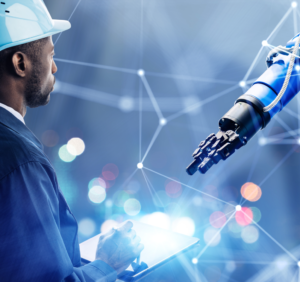The South African manufacturing industry experienced a 5.2% decrease in production in February 2023 compared to the same period in the previous year, with employment in the sector shrinking in the last quarter of 2022. However, with the world in the midst of significant technological transformation, it is now more important than ever for manufacturers to integrate these solutions and upskill employees to both increase outputs and create 21st-century jobs.

This is according to Dr Andrew Dickson, engineering executive at CBI-electric: low voltage who says that with the rise of tech such as AI, automation, and machine learning, companies will be able to improve their production processes and enhance their product quality. “This will undoubtedly change the nature of jobs in manufacturing, and while some roles will disappear, others will emerge, triggering a shift towards more specialised and technical positions.”
Where automation has a role to play
He points out that when it comes to manufacturing, there are two different approaches, each with its own set of complexities and challenges. “The first focuses on high volume manufacturing, where component count or throughput is important. In this environment, it is important to be able to repeatably produce components to a high degree of accuracy. This produces products that are consistent in appearance and performance and allows for scale of economy. The second centres around manufacturing large, complex components that may take days to produce but have a high value when sold. This approach requires a different set of skills and equipment, as well as an emphasis on precision and attention to detail. Concentration is placed on producing components that meet exacting standards and deliver maximum value to the customer, rather than simply focusing on volume and efficiency.”
“While the majority of manufacturing companies in South Africa focus on producing high-volume products where consistency is crucial to avoid poor quality outputs and reduce waste or scrap, there are human limitations when it comes to maintaining this consistency. Workers can get tired, lose concentration, or introduce human error which may result in substandard components being produced or accepted,” explains Dr Dickson. “Automating processes or checks can ensure consistent quality and minimise these errors.”
However, he highlights that automation can also produce many thousands of bad components quickly if not correctly monitored. “But with the help of AI, fast visual screening and machine learning, tighter tolerances can be maintained, and drifts can be detected earlier and corrected quickly, leading to better components and ultimately more consistent products. This will decrease scrap rates and improve product quality.”
With this in mind, Dr Dickson says that the increased need for consistency in the manufacturing process will make automation more critical than ever, leading many on the shop floor to be concerned about their job security due to the adoption of AI in industry. “This, however, is not the case.”
Many new job opportunities on the horizon for humans
“It is important to note that the adoption of tech will create new job opportunities, as it can enable companies to develop new products and services, improve efficiency and productivity, and ultimately grow their businesses,” he explains. “The impact of automation on jobs in the industry will depend on the specific context and application of the technology. In some cases, it can be used to augment human workers, providing them with tools and insights to help them work more efficiently and effectively. In others, repetitive, dangerous, or high precision tasks can be automated, freeing up workers to focus on operations that require human skills and expertise.”
How humans and robots can work together
In order to successfully adopt automation in the manufacturing industry, Dr Dickson outlines that it will require a comprehensive strategy that addresses both the benefits and challenges of the technology as well as supporting workers in acquiring the skills and knowledge they need to succeed in a changing work environment.
“This can be achieved by developing training programs that equip workers with the competencies they need to work with new technologies such as AI systems and automation tools,” he says. “Companies can also provide workers with opportunities to gain experience in different areas of the manufacturing process and promote a culture of continuous learning with ongoing opportunities for training and development. Additionally, employees might benefit from collaborating with ‘cobots’, which are robots that are designed to work with people, not replace them. Research has found that teams comprised of humans and robots collaborating are more productive than teams made of either humans or robots alone.”
Humans are irreplaceable
“It is clear that while automation and robotics technology continue to advance and transform the manufacturing industry, it is unlikely that machines will completely replace human workers,” notes Dr Dickson. “There are certain tasks that still require human intervention and oversight, and machines cannot replace the experience and expertise that comes from years of working in a particular job.”
“We, therefore, can’t deny the need for businesses to embrace these changes and to start preparing now, so that they can harness the opportunities that the Fourth Industrial Revolution presents to the manufacturing industry in South Africa,” he adds.
“This will allow them to remain competitive and contribute to the country’s economic growth by adapting to new technologies while also ensuring that the workforce is equipped with the necessary skills to work alongside machines. With careful planning and implementation, the transition to a more automated manufacturing industry can be a positive one, providing greater efficiency and productivity while also creating new jobs and opportunities for skilled workers,” concludes Dr Dickson.

